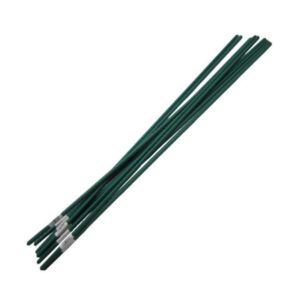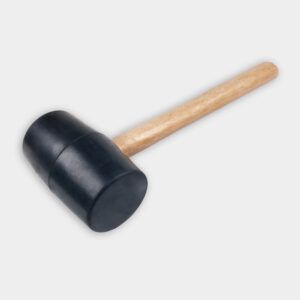Project details
Skill
Cost
Estimated Time
Concrete pavers are an attractive and affordable way to create a long-lasting walkway for your home. They’re manufactured to mimic brick or natural stone, giving you a high-quality look at a fraction of the cost. Plus, most homeowners can install them on their own.
In the video above, This Old House host Kevin O’Connor and landscape contractor Roger Cook demonstrate how to create a new walkway using concrete pavers. We’ll provide more guidance below.
Benefits of Concrete Pavers
Concrete pavers are a go-to choice for many homeowners thanks to the following benefits:
- Durability: These pavers boast resistance to cracking and can withstand various weather conditions.
- Low maintenance: They require minimal upkeep and can be easily replaced if damaged.
- Uniformity: Each paver is identical in size and shape, keeping a consistent look and making installation easier.
- Variety: They come in a variety of colors, shapes, and textures to fit different design preferences.
Types of Concrete Pavers
Choose a concrete paver that matches your landscaping. The following are popular styles:
- Cobblestone-style pavers: Provide a rustic, old-world charm
- Modern, sleek pavers: Perfect for contemporary designs
- Textured pavers: Better grip, making them safer for walkways
- Traditional brick-style pavers: Ideal for classic and colonial homes
Preparing for Concrete Paver Installation
Good prep work is key for a successful installation. This phase involves planning, gathering materials, and preparing the site.
Planning Your Walkway
Before breaking ground, consider the following:
- Color scheme and paver style: Select pavers that complement your home’s exterior colors
- Desired pattern: Choose a pattern such as running bond, herringbone, or basketweave.
- Drainage requirements: Create good drainage to prevent water buildup.
- Walkway dimensions and layout: Determine the length, width, and path of your walkway.
Tools and Materials
Here’s what you’ll need for your project:
- Circular saw with masonry blade
- Concrete pavers
- Concrete sand
- Crushed limestone (crusher run)
- Plastic edging and spikes
- Plate compactor (can be rented)
- Polymeric sand
- Rubber mallet
- Shovel, rake, and level
- String and stakes for marking
Site Preparation
Good site preparation will help you build a stable and long-lasting walkway. Take these steps before beginning installation:
- Mark the walkway area using stakes and string.
- Excavate the marked area to a depth of 8–10 inches, removing all loam and clay.
- Add a layer of crushed limestone base (crusher run) and rake it to be level.
- Compact the crushed stone using a plate compactor to create a solid foundation.
Installing the Concrete Pavers
With the site prepared, you’re ready to begin laying the pavers. This requires attention to detail to make a flat and secure walkway.
Lay the Sand Base
To start, spread a 1-inch layer of concrete sand over the compacted stone base. Use a screed board to level the sand, creating a smooth surface for the pavers.
Set the Pavers
Begin laying pavers at one end of the walkway, following your chosen pattern. Take advantage of the paver “nubs”—small protrusions on the sides that keep consistent spacing. Tap each paver gently into place with a rubber mallet and cut pavers as needed to fit at the edges using a circular saw with a masonry blade.
Secure the Edges
To prevent shifting and maintain the walkway’s integrity, follow these tips:
- Install plastic edging along both sides of the walkway.
- Secure the edging with spikes driven into the ground.
- Keep the edging flush with the pavers and hidden by landscaping or grass.
Walkway Finishing Touches
The final steps in creating your concrete paver walkway involve securing the pavers and adding the last touches for a polished look.
Add Polymeric Sand
Polymeric sand helps lock the pavers in place and prevents weed growth. Here’s how to add it:
1. Spread a thin layer of polymeric sand over the entire walkway.
2. Use a broom to sweep the sand into the joints between pavers.
3. Run a plate compactor over the walkway to vibrate the sand deeper into the joints.
4. Mist the walkway with water to activate the binding agents in the sand.
Landscape Around the Walkway
Embellish the appearance of your new walkway with these ideas:
- Add landscape lighting: Improve nighttime visibility and ambiance
- Include decorative elements: Use potted plants or garden art for added charm
- Plant flowers or shrubs: Add greenery along the edges to liven up the space
Concrete Paver Walkway Maintenance and Care
Concrete paver walkways are durable, but regular maintenance keeps them in top condition. To keep your concrete paver walkway looking its best, follow these best practices:
- Address any shifting or settling quickly to prevent further issues
- Reapply polymeric sand every few years as needed
- Rinse occasionally with a garden hose
- Sweep regularly to remove debris
Our Conclusion
Building a concrete paver walkway is a straightforward project that can significantly boost your home’s curb appeal and usability. Choose pavers that complement your home’s style and follow these steps carefully for the best results.










